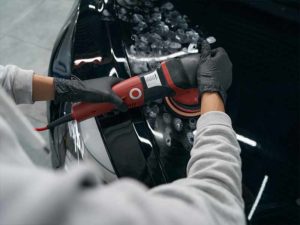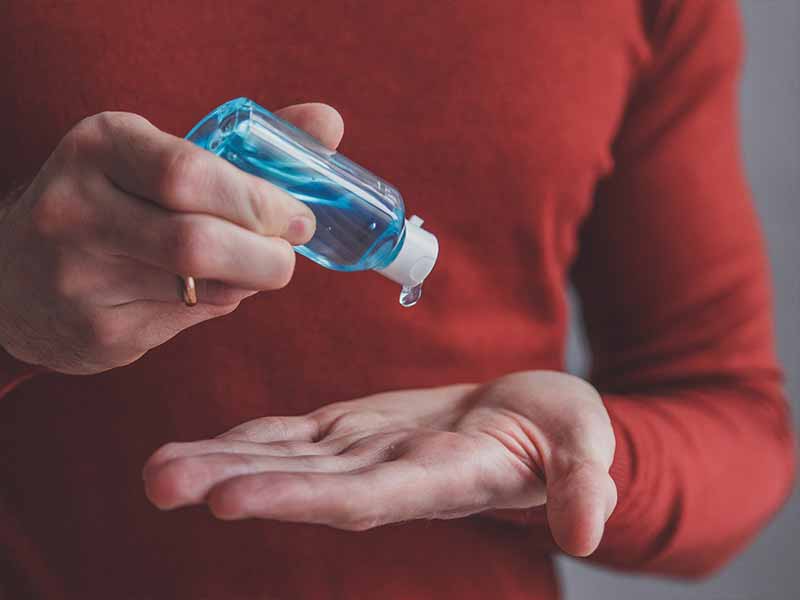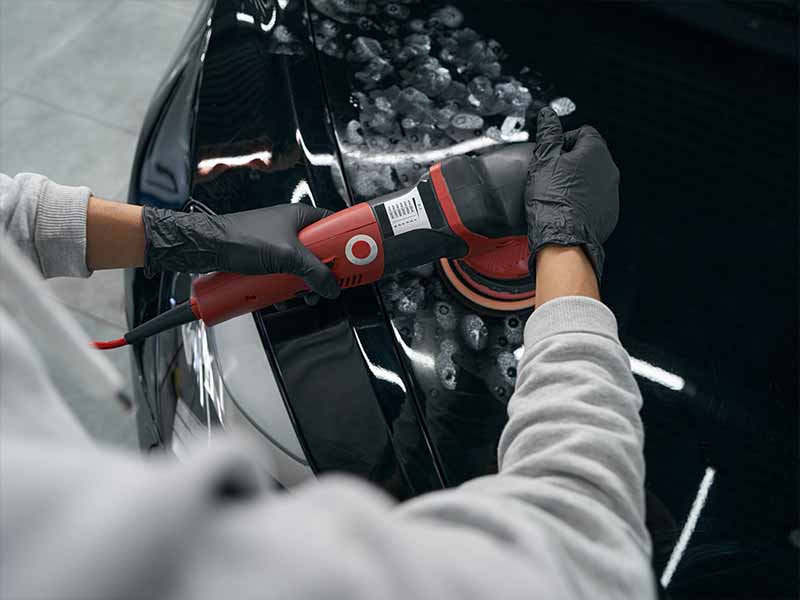Table of Contents
- What Is Paint Protection Film?
- Paint Protection Film Advantages and Disadvantages
- How much does it cost to install paint protection film?
- Is paint protection film worth it?
- What do Paint Protection Films protect against?
- How long does clear paint protection film last?
- Paint Protection Film Vs. Ceramic Coating
- Is paint protection film a good investment?
- Should I get paint protection film on my new car?
- Does car paint protection film come off?
- Does clear paint film damage paint?
- Can you install clear bra yourself?
- Does PPF turn yellow?
- Is paint protection film self-healing?
Paint protection film (frequently also called Clear Bra) is essentially a thick clear film sticker-like thermoplastic urethane applied onto rock chip-prone painted surfaces of your vehicle or your entire exterior.
Its purpose is, as its name implies, to protect your paint. It is incredibly durable and is capable of repelling small rocks to prevent paint damage such as stone chips and other sources of scratches.
While these are the basic features and descriptions of paint protection film (PPF), there’s a lot more to know before you decide if PPF is the right paint protection solution for your car or truck.
Continue reading to learn about all of the great benefits as well as some significant downsides.
What Is Paint Protection Film?
Paint protection film is a transparent thermoplastic urethane adhesive sheet applied to vehicle surfaces to protect the paintwork from damage. It’s especially good at preventing rock chips and light scratches. It also protects from UV exposure and is capable of self-healing minor scratches in its surface.
Paint Protection Film Advantages and Disadvantages
Let’s spell out every pro and con to keep in mind when making your paint protection choice.
What are the benefits of automotive paint protection film?
- Prevents scratches
- Prevents minor stone chips (and even some major ones)
- Blocks ultraviolet radiation
- Protects against corrosive damage
- When installed over entire body panels, it is almost invisible
- light scratches in the film can self-heal
- Lasts for many years
- Removable if necessary
- Doesn’t require much if any maintenance aside from washing
What are the disadvantages of automotive paint protection film?
- Very Expensive to have installed, especially when doing an entire vehicle
- Extremely difficult to install DIY
- Eventually will need to be replaced
- Some films may yellow over time (more significant issue on white or light-colored vehicles)
- If damaged more than a light scratch, the entire piece of film will need to be replaced
- May damage clear coat if not replaced according to manufacturers specification
- Typically doesn’t look as shiny as a vehicle without PPF
I’ve written an in-depth article on the disadvantages of paint protection film that covers my personal experiences in great detail.

How much does it cost to install paint protection film?
Costs vary slightly from one installer to the next. Also, you need to understand that some cars or trucks will be more challenging to apply the protective film onto than others. The majority of the cost for using PPF comes from the labor involved.
You can also opt only to have film applied to the front of your car or truck versus covering every painted surface. Since paint protection film is most effective for deflecting rocks and road debris from scratching and chipping your finish, only applying to the front of your vehicle makes a lot of sense financially.
Local PPF installer, Exclusive Detail here in Charlotte offers some ballpark pricing for various levels of installation. Here’s what you can roughly expect from them:
- Partial front $500-$900 – Includes Front Bumper, Partial Hood, Partial Fenders
- Full front $1200-$2400 – Includes Front Bumper, Full Hood, Full Fenders, Headlights, Mirrors
- Full Body $3000-$8000 – Includes All Exterior Painted Panels
They note that these estimates are for a small or mid-sized car that doesn’t require much, if any, paint correction. If you have swirls and scratches in your clear coat, fixing these problems before permanently covering them with car paint protection makes sense. Significant paint correction will require much more work and expense.

Is paint protection film worth it?
The big question everyone wants to know is if it is worth having PPF applied to their car or truck. The answer to this question depends on a few factors:
How long do you plan on keeping your vehicle?
If you plan on keeping your car or truck for a very long time, paint protection film can make a dramatic difference in the longevity of the finish. If you apply PPF to your new car or truck and remove it after five years, you’ll likely find that the finish is still essentially in like-new condition.
Do you do a lot of highway driving?
Highway driving increases the potential for high-speed impacts with small objects like rocks, gravel, etc. You may still get the odd rock or other things that may make a small ding or even penetrate the film and scratch or chip the finish, but it will be orders of magnitude less damaged. PPF is the best method of defending against this kind of damage.
Do you have a low and sloping sports car-like front end or a more upright truck-like front end?
Damage to your finish from stone chips often occurs lower to the ground than higher up. Trucks and SUVs tend to suffer fewer scratches and chips in their paintwork than a low sports car. You may want to apply PPF to some select bits on the front of your truck or SUV. But a sports car will likely benefit best from completely wrapping the front bumper and at least the leading portion of the hood and fenders. Unfortunately, it can be slightly noticeable when paint protection film doesn’t cover an entire panel. If there is an exposed PPF edge, it’s not uncommon for dirt and road grime to build up along the edge and stick to the adhesive slightly.
Do you tend to suffer minor door dings frequently?
Covering the side of your car or truck with PPF can be expensive, but it can eliminate minor paint transfer, scratches, and even slight dings. It can’t protect from more aggressive door dings, however.
Do you prioritize protective benefits over shine?
Paint protection film typically isn’t as glossy as the vehicle factory paint. A clean clearcoat, especially when waxed, will have a much better shine than PPF can achieve.
Is it affordable for you?
If your budget can handle it and some of the problems that PPF can uniquely solve fit your needs, it may be a good choice. You should remember that paint protection films don’t last forever and will need to eventually be replaced, which is just as expensive as the original installation. Also, if you sustain a significant rock chip or door ding that penetrates the PPF, that entire piece will need to be replaced. There’s no way to patch it without it being an eyesore.

What do Paint Protection Films protect against?
Clear bra products provide superior protection compared to other types of protection. Some of the protective benefits are:
- Scratches
- Small rock chips
- Swirl marks
- Stain resistance
- Acid rain damage
- Mineral deposits from hard water
- Paint stains
- Bird droppings
- Acidic bug splatter etching
Does PPF protect against rock chips?
Paint protection film is probably best known is perhaps best known for its ability to protect from rock chips. While it can do this quite well, there are limits. The thick film can prevent most small rock chips, but larger rocks and road debris may tear the urethane film and penetrate through to your car’s paint.
Does PPF prevent swirls?
Paint protection film is probably best at keeping fine swirls and scratches from your finish. Once PPF has been applied, nothing will touch your car’s paint unless something sharp penetrates through the film.
Even fine swirls and scratches in the PPF itself will heal themselves and fade away quickly. You may get the occasional scratch or similar damage that cannot self-heal, but swirls will be a problem of the past.
Does PPF protect against UV rays?
Quality PPF manufacturers add ultraviolet reflecting and rejecting additives to the urethane to keep the sun’s harmful rays from breaking down your vehicle’s paint and clear coat.
Does PPF protect against keying?
Paint protection film can protect from keying, but it can’t prevent a determined individual from causing damage.
If someone makes a half-hearted attempt to key your car or truck, the film will likely prevent harm from reaching your vehicle’s finish, although the PPF itself may need to be replaced.
More aggressive attempts at keying your car will likely still result in some damage to the finish, although PPF should lessen it to some degree.
Does PPF protect against door dings?
PPF is capable of protecting from minor dings. The PPF material is relatively thick and will absorb minor impacts slightly. What the film is more capable of is preventing paint transfer and scratches from doors that rest against the surface of your vehicle.
More significant door dings will still cause damage, but PPF will minimize the damage. It will likely not damage the finish but dent the metal of your body panel. Often, this type of damage can be easily fixed by your local paintless dent removal company.

How long does clear paint protection film last?
Protective films usually last between 5 and 10 years. After this period, they need to be replaced to maintain the same level of protection, prevent discoloration from yellowing, and ensure no damage from adhesive degradation.
When considering paint protection film, I strongly encourage you to spend more on a longer-lasting product. clear bra itself isn’t expensive. Most of the cost is involved with the installation process. Paying more for a better product will save you a substantial amount later.

Paint Protection Film Vs. Ceramic Coating
Ceramic coatings are the runner-up to PPF when it comes to paint protection. But these two products couldn’t be more different.
A ceramic coating can’t provide the impact protection that clear bra are capable of offering. Some ceramic coatings are known for reducing fine swirls and scratches, but they can not protect from stone chips and door dings.
Ceramic coatings provide similar chemical resistance and prevent damage from tree sap, bird droppings, iron fallout, and general road grit and grime.
Clear bra can’t compare to the hydrophobic properties and amazing shine of most ceramic coatings. However, you can apply wax or a ceramic coating to most paint protection films, which can solve this issue for most people.
Ceramic coatings wear away slowly and lose effectiveness over time but typically last many years. Some professional-grade ceramic coating formulations claim to last over 10 years. Consumer-grade formulations tend to not last much more than 5 years.
Is paint protection film a good investment?
The expense of clear bra begins to raise the question of whether it is worth it for the amount of money that needs to be spent. Again, the answer to this question depends on what you value.
You could plan on repainting your car after 10 years and save the money you would have spent on protective paint film installation. If you get a lot of rock chips from highway driving, you might even plan on respraying the front end of your car or truck every few years.
If you plan to sell your vehicle after a few years or you’re leasing it and will be turning it back in, you will be in a much better position when it’s time to sell or turn your car or truck in. The amount of money that you spent to achieve this benefit, though, isn’t worth the trade-off for only this result. You’d need to have more of a return to justify the expense.
Repainting a car or truck typically lowers its value. Most paint jobs are done after manufacture are lower quality and easily identified by professionals. If you intend to repaint your vehicle as a means of dealing with damage that PPF can prevent, you’ll want to find a very high-quality automotive painter if you expect the quality to be as good as that from the factory.
Should I get paint protection film on my new car?
The best time to apply clear bra is when your car or truck is brand new. Using a paint protection film as soon as you receive your new vehicle will ensure that the finish will remain as like-new as possible and prevent the build-up of fine swirls and scratches that happen over time.
Does car paint protection film come off?
PPF is removable. It usually requires the aid of a heat gun to make removing it more manageable. There may be adhesive left behind that will require a solvent of some kind to remove, but this will not damage your finish.
Once removed, your paint finish will be as pristine as when the film was applied, assuming there were no penetrations.
You can reapply fresh paint protection film or use a more traditional wax, paint sealant, or ceramic coating.

Does clear paint film damage paint?
Clear bra doesn’t damage paint, but if it is left on too long, the adhesive can begin to break down the clearcoat layer of your paint job.
If you follow the paint protection films manufacturer’s recommendations and remove it at its end of life, you shouldn’t have any issues.
Can you install clear bra yourself?
You can, and I suggest that the DIY-minded detailer try to do so. Large clear bra sheets may require a little help to position, but if you learn the techniques involved, you can do the job by yourself if you need.
I used to work at a sign shop installing vinyl lettering and graphics. We also did some vinyl wraps on some cars, trucks, and vans. The techniques we used for vinyl wraps are identical. It’s pretty manageable if you do some research first, go slow, and plan to waste a little material as you learn.
Paint protection film material is relatively inexpensive. The cost involved is in the application of the film. If you can perform the job yourself, you’ll save a considerable amount.
If you learn how to ensure it’s properly applied, you’ll have a skill you can use to make a good income installing PPF and vinyl wraps yourself.
Does PPF turn yellow?
Some PPF will turn yellow over time, but this usually happens when it isn’t removed when the manufacturer recommends.
If kept on long enough, most protective films will eventually begin to break down and yellow. Yellowing is much more minor of an issue on darker-colored cars and trucks. But on a white vehicle, it can be pretty obvious. Noticeable yellowing is especially true of film that is not applied across an entire panel and has a seam or transition line.
Is paint protection film self-healing?
Amazingly, this is true. PPF does have some self healing properties. It can heal slight scratches and fine swirls. It isn’t a miracle product, though, so it can’t heal deep scratches or cuts. It also can’t repair rips or tears. These types of damage will need to be accepted, or the entire section will need to be replaced.









